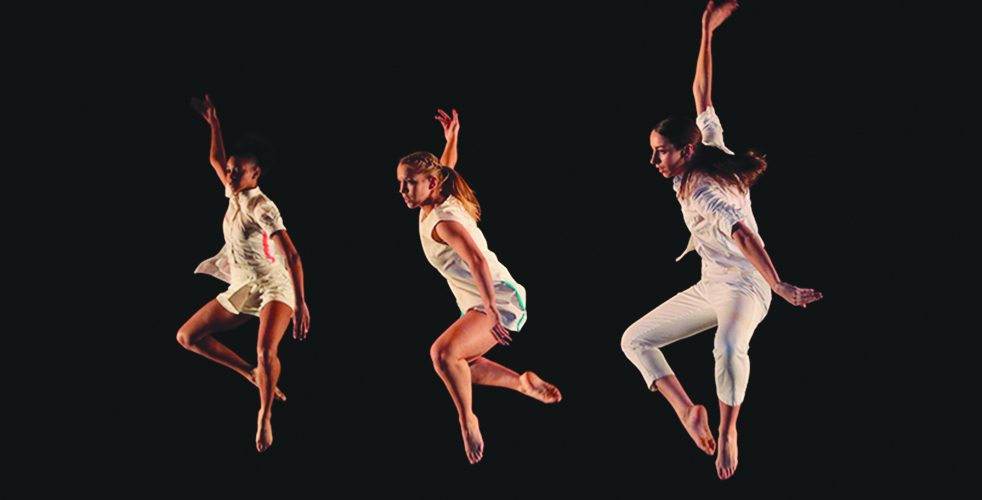Courtesy of Johan Elbers
One word can best summarize the faculty Spring Dance Concert that took place from Thursday, April 11, through Sunday, April 14: mesmerizing.
The modern, experimental style of most of the numbers made them particularly engrossing to watch. Dancers moved in complete unison to music that had no discernable beat and few details to anchor themselves to in several of the numbers, leading members of the audience to wonder how much work it must have taken to polish these pieces.
“Turning the Space” turned tap dancing into ice skating, and “Cause/Effect” played music backward and forward, splitting the group in half. “Crash and Move” was the most energetic piece, with several minutes of green-clad dancers running, jumping and fighting in an almost militaristic style. The piece played a great deal with lighting and silhouettes to enhance the tense feeling.
“Coterie” was an intriguing conversation about finding individuality within a group. The number began and ended with five dancers facing each other in a tight, connected circle, moving in sync. Over the course of the song, the dancers paired off or performed solos, finding their own styles until they came back together at the conclusion.
“Bound(less),” the opening number, showed people finding exactly what the title suggests: freedom. The dancers began swaying together, performing monotonous motions reminiscent of household chores typically associated with women, such as kneading, mixing and scrubbing.
One dancer managed to break free, suddenly and violently, causing those around her to follow suit. Eventually, the group blindly followed the leader, and the monotony began again. The piece ended on a hopeful note, with the new leader reaching up as if for something different than what has come before.
“Into Sunlight,” the final two-part performance, was based on the stories of a Vietnam veteran. “Longing” was a heartbreaking duet that seemed to show the effects of post-traumatic stress disorder on a couple.
The man sat motionless through most of the piece as the woman desperately contorted herself around him, trying to capture his attention. Finally, she was able to push him to lay down as she slowly moved his arm around her, and they went to sleep. He did not seem to see her and did not move unless moved by an outside force.
For her part, the woman seemed to be trying in vain to reconnect with her now-distant partner, but decided to accept and make the most of the new reality she had been given.
“Until the Angels Came” dealt more with the actual combat of the Vietnam War. Two groups of dancers, in maroon and white respectively, moved around each other in a beautifully choreographed fight, with the dancers in maroon seeming to have the upper hand for most of the number.
Every time it seemed the dancers in white would gain an advantage, it was taken away, but both sides were worn down by the end.
The piece ended with the groups mingling, coming together and looking up toward the sky into sunlight. Whether this symbolized death or finding humanity beyond manufactured differences, this was a truly powerful and moving moment on which to end the concert.
The purpose of art is to make the viewer feel something, and the Spring Dance Concert absolutely achieved that goal. It was captivating and moving from the first number to the last.







